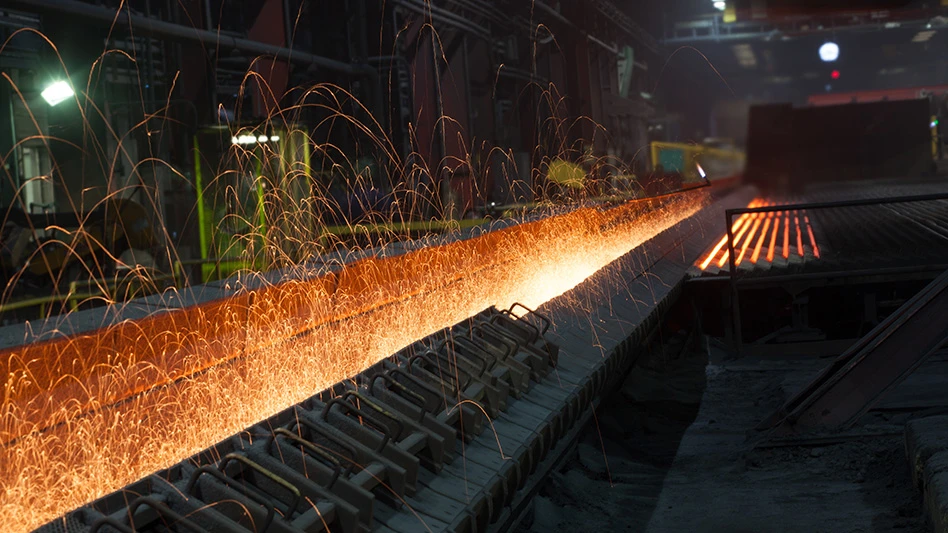
Photo courtesy of Nucor Corp.
Global business information and research services firm Wood Mackenzie has issued a report predicting “new metallic hubs” will emerge as the steel industry accelerates investments to decrease its carbon footprint.
The company says research leading to its latest Horizons report indicates the steel industry is set to undergo a significant transformation as decarbonization efforts accelerate.
The report, “Metalmorphosis: How decarbonization is transforming the iron and steel industry,” makes the case for the emergence of new metallic hubs and the reshaping of steel production and global trade patterns.
The report predicts electric arc furnace (EAF) technology, increased use of “green” feedstock and evolving carbon policies will play leading roles in the transformation.
The authors also speculate that relatively high-carbon-emissions steel made in China and India could experience future difficulties in the global steel market. Currently, China makes more than half of the world’s steel and India hosts one of the fastest-growing steel industries in the world.
“Low-carbon-intensive EAF production accounts for 28 percent of global steel output, projected to rise to 50 percent by 2050,” Wood Mackenzie says. "An investment of $130 billion will be required to achieve this goal.”
The greener feedstocks Wood Mackenzie refers to include direct-reduced iron (DRI) and high-grade ferrous scrap. Wood Mackenzie predicts the share of these feedstocks in total metals demand will increase from 36 percent to 54 percent by 2050, “leading to new production, processing and trading hubs for low-carbon iron and scrap.
DRI production and a rise in trade will create investment and revenue generation opportunities within the value chain, the firm predicts. Wood Mackenzie forecasts a doubling of DRI capacity within 30 years, requiring an estimated $80 billion investment. “This projection does not include potential investments in green hydrogen, smelters for low-grade DRI, pellet hubs and shipping,” the company adds.
Wood Mackenzie predicts the location of new green DRI production centers will be determined based on their proximity to low-carbon hydrogen production. “The Middle East and Australia are well-positioned to take advantage of this opportunity, and the number of projects in these regions is increasing,” the company writes.
“In markets with high-carbon prices, importing green DRI to manufacture low-carbon steel using EAFs will become more favorable than importing finished steel from emissions-intensive producers like China and India."
Latest from Recycling Today
- BMW Group, Encory launch 'direct recycling’ of batteries
- Loom Carbon, RTI International partner to scale textile recycling technology
- Goodwill Industries of West Michigan, American Glass Mosaics partner to divert glass from landfill
- CARI forms federal advocacy partnership
- Monthly packaging papers shipments down in November
- STEEL Act aims to enhance trade enforcement to prevent dumping of steel in the US
- San Francisco schools introduce compostable lunch trays
- Aduro graduates from Shell GameChanger program





